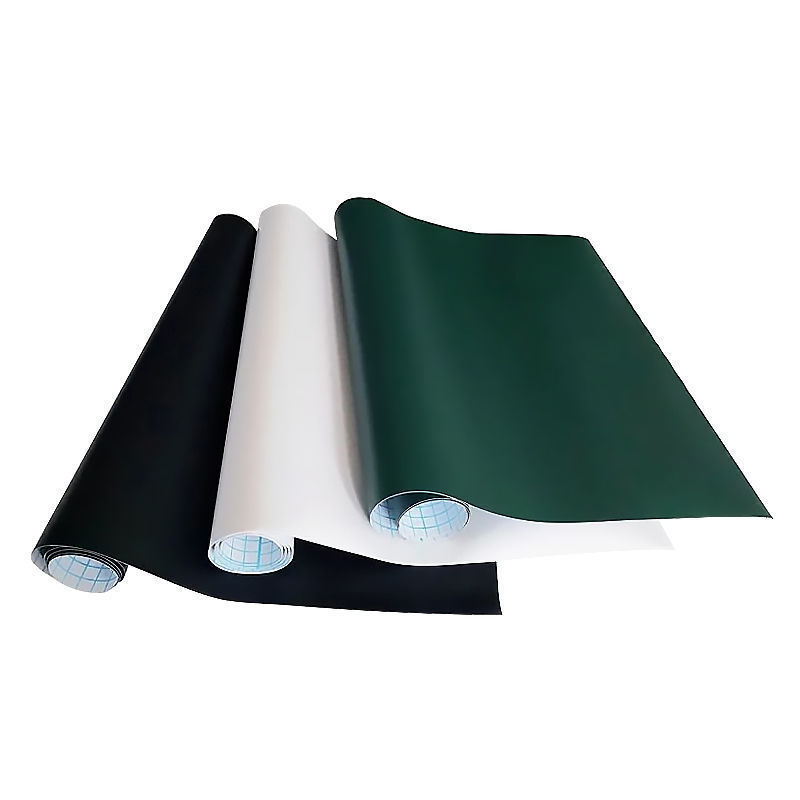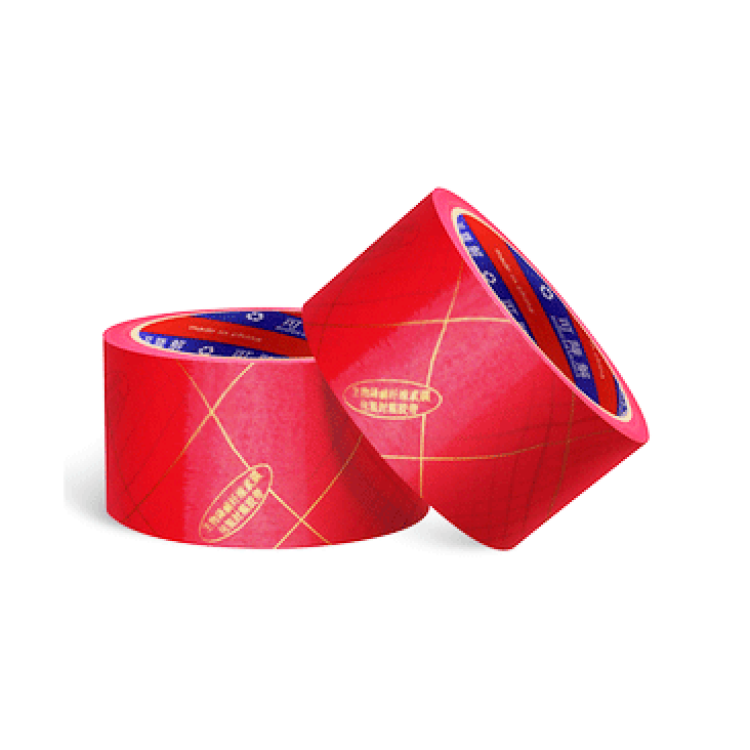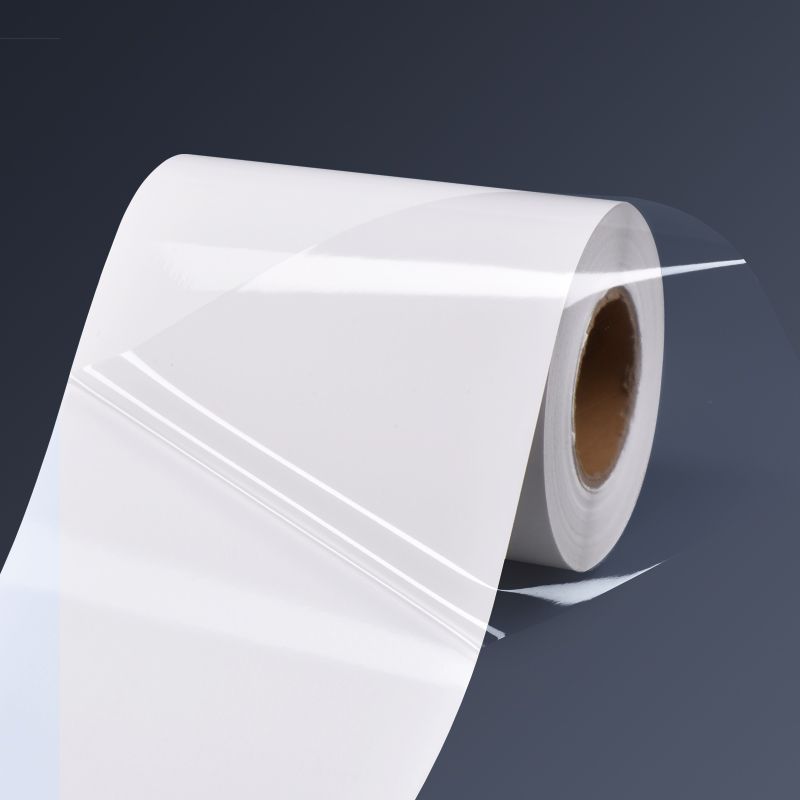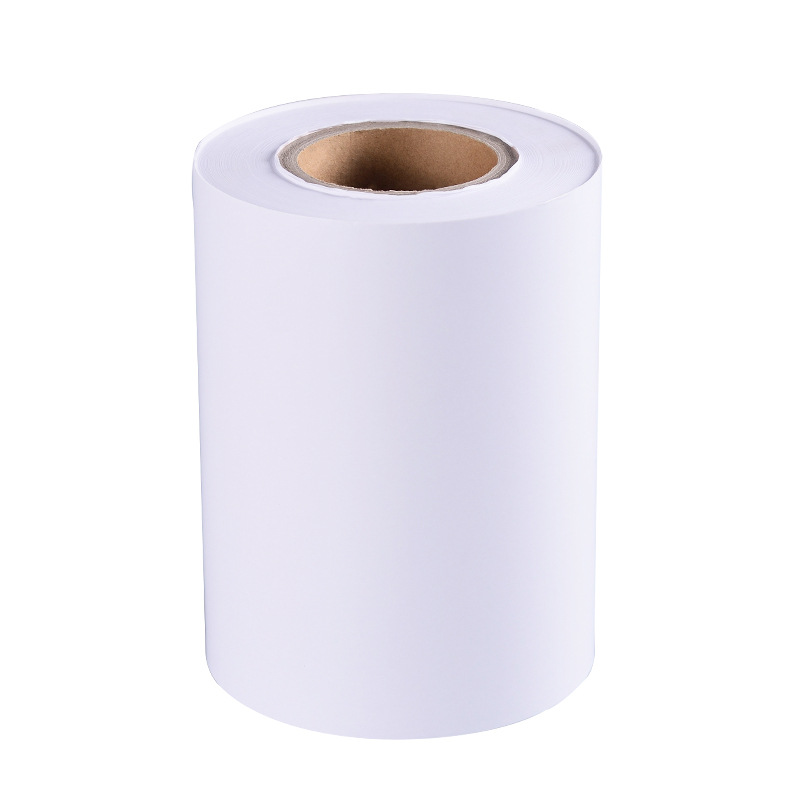PE adhesive material
PE adhesive label material is an adhesive label made of polyethylene material. They have various advantages, such as water resistance, temperature resistance, scratch resistance, corrosion resistance, acid and alkali resistance, etc. Therefore, they are widely used in scenarios such as goods identification, price tags, price tags, product manuals, valuable item tags, clothing labels, etc. At the same time, when using PE adhesive labels, there is no need to apply water or oil, and they can be directly attached to the surface of objects
Advantages of PE adhesive labels:
1. Strong stickiness: The adhesive of PE self-adhesive labels has high stickiness and can quickly adhere to various material surfaces without easily falling off or shifting
2. Wide applicability: PE adhesive labels can be applied to surfaces of various materials, such as glass, metal, plastic, etc., with a very wide range of applications
3. Corrosion resistance: PE adhesive labels have good corrosion resistance and can resist the erosion of some chemicals, thereby protecting the text and patterns on the label from damage
4. Environmentally friendly and recyclable: PE materials are recyclable and will not cause pollution to the environment, while also conforming to the current trend of green and environmentally friendly development
Disadvantages of PE Adhesive Label Material:
1. Poor high temperature resistance: The high temperature resistance of PE adhesive labels is relatively poor. If they need to be used in high temperature environments, other materials of labels need to be selected
2. Limited solvent resistance: PE adhesive labels may dissolve in certain solvents, such as organic solvents, so careful selection of label materials is necessary in certain specific environments
3. Limited thickness: The thickness of PE adhesive labels is relatively thin, and if thicker labels need to be made, it may increase production costs and difficulty
List of PE Polyethylene Adhesive Materials

PP synthetic paper adhesive material
The key raw materials for PP synthetic paper adhesive materials are organic resins such as PP, high-pressure polyethylene, and polyethylene. By igniting, melting, extruding, and coating epoxy resin, it is stretched radially along different types, and then the plastic film is repaired to make it more transparent and finer, which is then produced into synthetic paper. The raw materials are divided into PP synthetic paper, HDPE synthetic paper, PS synthetic paper, PVC synthetic paper, PET synthetic paper, ABS synthetic paper, etc; The most common is still PP synthetic paper material
Synthetic paper adhesive is a new type of plastic material product and also an environmentally friendly adhesive. It has the characteristics of light weight, high strength, tear resistance, good printability, light shielding, UV resistance, durability, economy and environmental protection
Characteristics of Synthetic Paper Adhesive:
1. Synthetic paper is very economical and environmentally friendly. In terms of its material production, it uses minerals such as calcium bicarbonate for filling. This can greatly reduce plastic consumption, and this synthetic paper can also be recycled and reused. In addition, synthetic paper is not made from traditional paper, but from natural flowers, plants, and trees. Therefore, it does not pose a threat to human health, and its utilization rate is 100%. Even if it is centrally burned, it will not cause any harmful substances
2. Synthetic paper is relatively lightweight in proportion, so its stiffness is just right, making it very suitable for applications
3. Synthetic paper has high durability, even after prolonged use, and is not easily damaged. And this type of paper has a very high compressive strength, as well as excellent anti puncture ability and wear resistance. In addition, synthetic paper also has excellent wear resistance and stretch resistance. It feels very warm to use
4. Synthetic paper is not like traditional chemical fiber paper, which does not add any fiber components and can achieve 100% moisture resistance, oil resistance, and chemical resistance. And the synthetic paper material has a very high fineness, but most of it is transparent, and its masking performance is good. Its UV stability is also very high
5. Synthetic paper has a smooth surface, stable specifications, is easy to produce and process, and is also convenient for packaging, printing, and writing
6. Synthetic paper materials also have a very long storage time, after all, they are made of chemical raw materials, and their insect and corrosion resistance effects are relatively good
PP Series Adhesive Material List


High temperature resistant polyimide adhesive material
High temperature resistant barcode label is an opaque polyimide (high temperature resistant) label with permanent acrylic pressure-sensitive adhesive and a white surface layer suitable for heat transfer printing. It is designed to meet the high temperature requirements of reflow soldering (260 ℃) and wave soldering (350 ℃) environments, and is specifically designed for character or barcode identification on printed circuit boards or related electronic components. In addition, the labels are designed to resist corrosive fluxes and multiple rounds of cleaning commonly used in circuit board applications, making them ideal materials that can withstand the erosion of various soldering agents, melting agents, and cleaning agents encountered in the production process of circuit boards
Features
There are two types of substrates: PI and PET UL94 VTM-0&VTM-1 Fire Rating Certification (Flame Retardant)
Compliant with FAR smoke and toxic gas standards
Compliant with BSS 7238& 7239 standard
High temperature resistance, chemical resistance
Compliant with REACH; And RoHS standard, halogen-free
Purpose
Suitable for SMT surface mount manufacturing process of PCB circuit boards, it is a special label for printed circuit board (PCB) identification (commonly used for temperature resistance of 260 ℃ for 6 minutes). After passing through the furnace, it does not bubble, curl, glue, yellow, or be easily corroded by various chemical substances in the flux
Nylon cloth adhesive material
Nylon cloth is a type of polyamide nylon cloth label with permanent acrylic pressure-sensitive adhesive and suitable for heat transfer printing and needle punching surface coating. It is mainly used for long-term identification purposes such as liquid nitrogen storage, laboratory test tubes, cables, etc. Nylon cloth labels have good wrapping properties, do not stretch feet, strong adhesion, good weather resistance, and can withstand harsh working environments such as high and low temperatures
Advantages of Nylon Fabric Material:
1. Suitable for different environments, including extremely low temperature environments with rapid cooling, high-temperature sterilization processes, and sterilization processes< br /> 2. With the design concept of non-toxic, harmless and environmentally friendly, it is a non-toxic product in medical and dust-free environments, with excellent printing and writing characteristics, and can be widely used in low-temperature environments such as biomedical< br /> 3. First class reading rate and superior chemical and wear resistance, with a width of 10mm capable of printing 15 digit barcodes and achieving 100% reading rate
4. Super low temperature resistance, even in liquid nitrogen environment of -196 ℃, the label can still be firmly attached to the wall of the freezer and maintained for a long time< br /> 5. Can be used for cable identification
Nylon Fabric Material List

Laser etched adhesive material
Laser etched label paper is a two-layer film used for the production of labels in laser marking equipment. By special production techniques, the black surface and white bottom form a unified whole. The material is halogen-free and resistant to chemical substances, temperature and other environmental influences. It is coated with high-performance acrylic adhesive, which has good initial adhesion and high final adhesion even on low-energy surface energy surfaces such as polypropylene. Laser label paper can also be used for identifying evidence based on specific application scenarios. Usually, once the label is attached to a surface and removed, it will be damaged and comply with UL/CSA standards
Laser can etch the top layer of double-layer materials to form a certain pattern. The same laser also allows labels to be semi perforated to specific sizes, increasing flexibility to manufacture various durable labels
Surface substrate:
Basic weight: 155g/m2 10% Thickness: 100um 10%
The surface material of this product has been treated to be resistant to chemicals such as engine oil, alcohol, and gasoline, and is suitable for anti-counterfeiting purposes on nameplates. Commonly used for labeling automotive components such as internal combustion engines, VIN codes, and vehicle information plates, disinfecting medical equipment labels, power battery labels, and nameplates for equipment with complex operating conditions
Adhesive:
Initial adhesion force:≥ 20 N 90° Peel force:≥ 9N/25mm
Minimum label temperature: 5 ℃ Operating temperature: -40 ℃ -150 ℃
This product uses modified acrylic adhesive, which has good initial adhesion, adhesion, and temperature resistance. It has excellent adhesion performance on metal surfaces or metal paint surfaces
Release paper:
Basic weight 110g/m2 10% Thickness: 105um 10%
Opacity: 85% Longitudinal tensile strength: 40-55N
Processing Attention:
This product is suitable for laser marking and cutting. Attention should be paid to adjusting the filling method, density, energy, and speed< br /> Storage period: at a temperature of 23 ° C; 2 ° C, relative humidity of 50 ° C; In 5% of cases, it can be stored for one year. Products that have exceeded their expiration date can still be used after passing inspection
Instructions for use:
The temperature resistance, chemical resistance, peel resistance, and wear resistance of the product need to be tested and approved according to the end use scenario before use
We offer comprehensive technical support, including free professional labeling solutions, advice on label materials and adhesive selection, as well as online/offline assistance from professional software and hardware engineers. Service email: andy@ownlikes.cn. In pre-sales, we leverage our extensive experience in specialty labeling projects to provide clients with the most suitable hardware solutions. Additionally, all our label barcode printers and scanners come with a three-year free warranty, demonstrating our confidence in our products.






This site is protected by reCAPTCHA and the Google Privacy Policy and Terms of Service apply.